Authentic flavours, time-saving techniques: Bengali festive feasting made easy
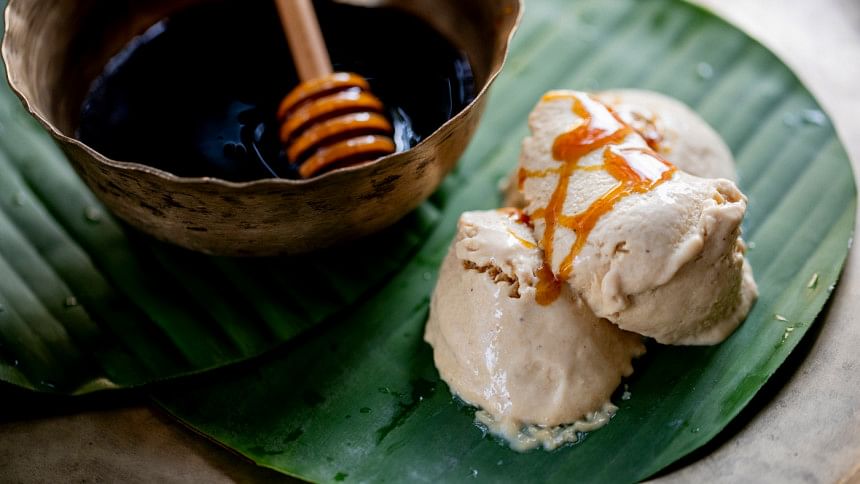
Sometimes, even the most complicated recipes can use cheat codes to make life easier and cooking faster. Unlike our predecessors, we hardly have the time for elaborate techniques. The following three recipes all use cheat codes in their execution without taking away the authentic flavour of the original dishes. Try them for your puja luncheon or on any other occasion.
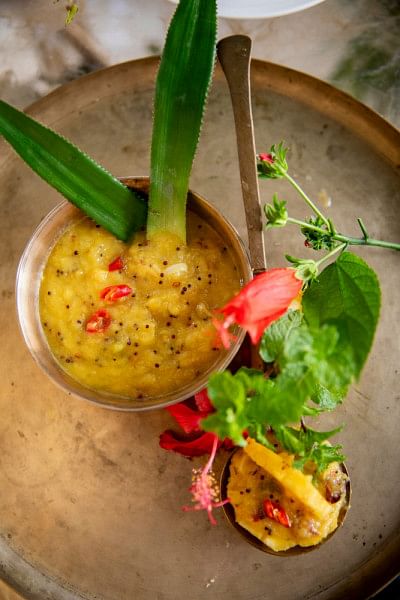
ANAROSH CHUTNEY
Chutneys are all-time Bengali favourites. It is the Asian spin to sauce or anything preserved in sugar and vinegar, regardless of its texture, ingredients, or consistency. Chutneys are mostly made from fruits, vegetables, and herbs with vinegar, sugar, and spices. Not only every country but each individual has his/her take on this versatile condiment.
Pineapple chutney with mustard seeds is my favourite "tok," as said in Bengali, or relish to go with my fritters. It is also a perfect condiment for a charcuterie board. For a true "mache bhaate Bangali" like me, nothing is more appetising than a plate of steamed rice mixed with daal and a bit of pineapple chutney and a slice of fried rui fish.
Ingredients
2 tbsp mustard oil
1 tbsp mustard seeds
1 tbsp nigella
2 pineapples peeled, cored and chopped into small chunks
1 red chilli, deseeded and finely chopped
Thumb-sized piece of ginger, finely chopped
250g soft light brown sugar
Method
Boil the pineapple chunks in half a cup of water and blend it into a puree. Heat the oil in a large heavy-based pan. Temper the oil with mustard seeds, nigella and add the puree and cook for 5 minutes until fragrant. Add in the ginger and red chilli, and brown sugar and simmer until golden and thick. Pour into sterilised jars and allow to cool before covering.
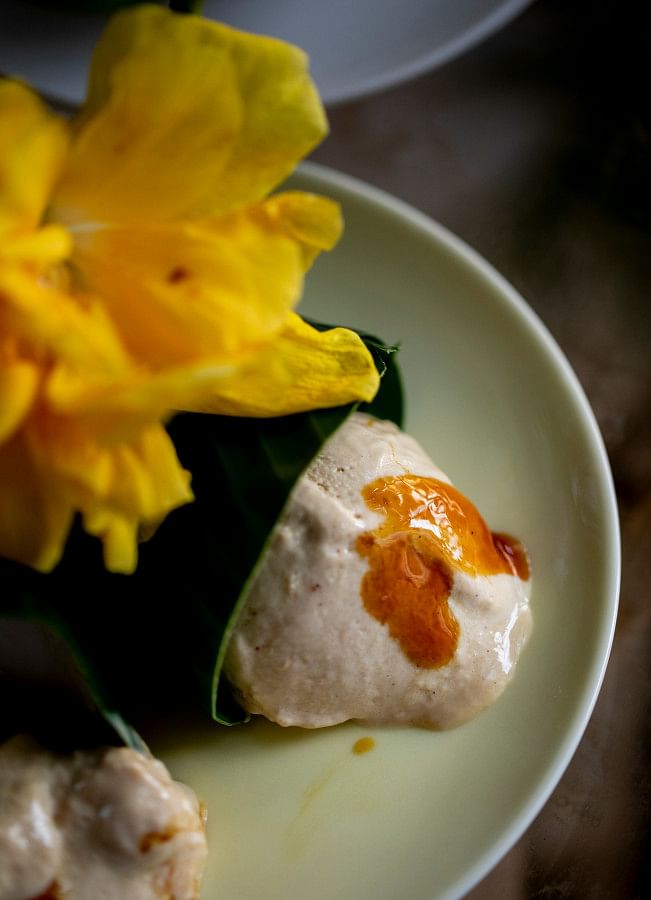
NOLEN GUR ICE CREAM
I first came across the term 'nolen gur' while in Kolkata visiting my friend, Anindita. I love how she talks — her Bangla expressions and wordings are so suave that I feel like that awkward, kitsch, country mouse in her company. Nolen gur sounded like some exotic West Bengal version of our plain old gur.
I Googled the term — nolen gur — first thing after returning to Dhaka and to my utter surprise, it is nothing but our very own jhola gur.
Jhola gur is used for making our quintessential moa, binni chaler payesh, and even spread on a slice of toasted bread. You can fancy a fusion dessert, nolen gur ice cream.
I had a scoop of it with Anindita and then I forgot all about it. Recently, while making my puja menu, I thought of making Nolen Gur Ice Cream. I never made ice cream before but there is always a first time!
Ingredients
1½ cans of cream
150g nolen gur/date palm jaggery
170g evaporated milk or 1 litre full-cream milk
2-3 tbsp water, to melt the nolen gur
Method
If you do not have evaporated milk, then boil the full cream milk in a heavy-bottom non-stick pan and put it over the lowest flame until it thickens and comes down to less than half a litre. In a separate pan, pour out the liquid nolen gur/date palm jaggery, add 3 tablespoons of water into the pan and melt the nolen gur at the lowest flame. This is done so that when added to the milk, it does not curdle. Make sure that the jaggery does not get stuck to the bottom. It may spoil the flavour of nolen gur. Then transfer the melted nolen gur to a separate bowl immediately and allow it to cool down.
Take a mixing bowl and add the milk and jaggery and cook for a few minutes on low flame. Beat the cream with the help of a hand mixer till smooth, heavy and stiff peaks start coming up. Add the milk and jaggery mixture to it, and beat for a few minutes and transfer the mixture into an airtight container. Put it in the freezer for at least 7-8 hours, but overnight gives the best result.
Serving instructions: Scoop out nolen gur ice cream into a bowl or on a serving plate. Pour some nolen gur over the top for extra flavouring and add a twig of fresh mint to cleanse the palate after such a sweet treat. A confession; my first trial tasted more like a kulfi malai, than ice cream.
Tips: You can use the patali or solid version of the gur if you don't have the liquid one. However, Shorsho Prabartana carries the jhola gur item.
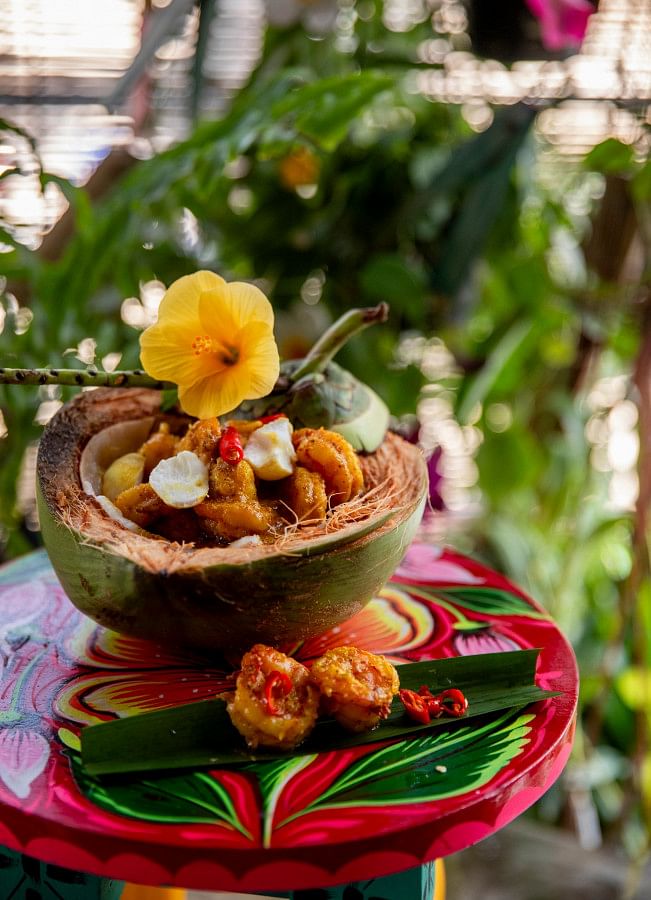
DAAB CHINGRI
It is a very popular West Bengal dish, especially during Durga Puja. I first tasted this divine shrimp curry steamed in a green coconut in an Indian restaurant in Dhaka. What caught my fancy was the entire drama that went into plating it.
The authentic daab chingri recipe suggests putting the marinated prawns with the masala paste inside a sealed tender coconut, and placing it inside the earthen stove to slow cook. It can be prepared by either placing the coconut in a large steamer, pressure cooker, or a pan on the stovetop.
However, for easy cooking, my cheat code would be to just bring in the main character, or green coconut, in the last scene of the drama that is when plating it.
Ingredients
250g prawns (chingri)
1 tsp turmeric powder
Salt as per taste
1 tsp poppy seeds (posto)
2 tbsp mustard seeds (shorshe)
2 tsp grated coconut or young coconut flesh of the tender coconut
6 green chillies, as per taste
1 cup coconut water
1 tender coconut (daab)
3 tbsp coconut milk
Method
Cut and devein the prawns; marinate with a pinch of salt and turmeric powder and keep them aside for 10 minutes. Pour the coconut water, and scrape out the tender flesh in the mixer; add mustard seeds, poppy seeds and green chilli and pulse it to a paste. Now, lightly stir fry the prawns in mustard oil, be careful to not over-fry — that would make it rubbery. Place it in a bowl and add the masala paste, coconut milk, coconut water, salt and mix it well. Fill the whole content carefully inside the coconut shell but leave a little space inside. Take a large pan and add water to it. Place the coconut carefully into the pan. The water level should be 1/3 of the height of the coconut. Cook for 30 minutes on medium heat.
Serve it on half-open coconut shell and garnish it with red chillies.
Food & Styling: RBR

 For all latest news, follow The Daily Star's Google News channel.
For all latest news, follow The Daily Star's Google News channel. 


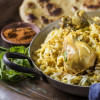


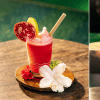


Comments